Introduction: Why Construction Delays Are Costly?
Construction delays are some of the most disruptive issues in the industry, affecting owners, general contractors (GCs), and subcontractors alike. Delays increase financing costs, stall revenue streams, and erode stakeholder confidence. For GCs, they trigger higher overhead, liquidated damages, and reputational risks. Subcontractors face cash flow interruptions and scheduling conflicts.
According to McKinsey, large construction projects typically run 80% over budget and 20 months behind schedule, costing billions annually in lost productivity. For projects in critical sectors, like oil & gas, data centers, or semiconductor plants, even a one-day delay can translate into hundreds of thousands, or even millions, of dollars in lost revenue or penalties.
The Complexity of Construction Scheduling
Resource-loaded schedules integrate labor, equipment, and material allocations with project timelines. While essential for planning and cost control, they are extremely complex:
- Hundreds of interdependent tasks across multiple trades.
- Workforce availability, weather, supply chain delays, and safety incidents affect progress.
- Manual updates often produce blind spots, outdated plans, and reactive problem-solving.
Schedulers must constantly monitor multiple variables, including:
- Labor availability and trade stacking in construction
- Equipment allocation and lead times
- Material delivery schedules
- Weather and site conditions
AI in construction scheduling automates these adjustments, continuously recalculating schedules based on real-time conditions, so planners can focus on strategic decisions instead of manual updates.
Why Traditional Scheduling Fails
Even advanced project management tools often fall short due to:
- Delayed or incomplete field data: Managers may not know actual worker activity until days later.
- Fragmented communication: Teams working across multiple platforms can misalign priorities.
Static assumptions: Resource allocations are based on estimates rather than real-time data.
These gaps can create cascade effects a single delayed task affects multiple trades, materials, and deadlines causing significant project cost overruns.
Earned Value Management (EVM) and AI: Closing the Gap
Earned Value Management (EVM) measures project performance by comparing:
- Planned Value (PV) – the scheduled work value
- Earned Value (EV) – the completed work value
- Actual Cost (AC) – the cost incurred
EVM works best in projects with well-defined scopes, low variability, and consistent reporting like large oil & gas facilities or infrastructure megaprojects.
EVM struggles when applied to:
- High-variability projects like commercial or vertical construction
- Jobs with incomplete or delayed field data
- Rapid trade turnovers
AI-driven platforms supplement EVM by automatically capturing real production data worker hours, trade presence, and installation quantities delivering real-time earned value insights without manual spreadsheets.
Top Reasons Construction Projects Experience Delays
Several studies highlight the main drivers of construction delays:
- Poor planning and scheduling: 60%+ of delayed projects (McKinsey)
- Skilled labor shortages
- Fragmented communication and misaligned incentives
- Limited adoption of digital tools and real-time tracking
- Scope changes, weather, rework, and supply chain disruptions (KPMG Global Construction Survey)
Identifying these causes is the first step toward proactive scheduling and delay mitigation.
The Financial Impact of Delays: Real-World Examples
Delays in high-stakes projects like data center in construction, oil & gas infrastructure, and semiconductor plants are not just inconvenient they are extremely expensive:
Data Center Construction Delays
- Delayed commissioning reduces uptime and revenue.
- Cost: $300,000–$1M per day (Uptime Institute, CBRE Research)
Oil & Gas Projects
- Every day of delay affects output and contract obligations.
- Cost: $1M–$3M/day for mid-size projects; up to $10M/week offshore (PwC, Shell, Chevron)
Semiconductor & Battery Plants
- Delays disrupt manufacturing schedules and downstream commitments.
- Cost: $500,000+/day for a $5B fab (McKinsey, Semiconductor Industry Association)
Lesson: Even short delays can cascade into multi-million-dollar setbacks, lost supply chain commitments, or breached SLAs.
How AI in Construction Scheduling Solves These Challenges
AI improves construction scheduling by integrating field data, predictive analytics, and scenario modeling:
- Predictive Workforce Allocation: Forecasts labor needs by trade and day to avoid overstaffing or trade stacking.
- Real-Time Progress Tracking: IoT devices and digital badges capture worker activity and feed directly into production reports.
- Dynamic Earned Value Insights: Field-collected data updates EVM automatically.
- Delay Risk Alerts & Scenario Planning: Detects missing trades, bottlenecks, and performance issues early, providing “what-if” simulations.
By reducing blind spots and providing actionable insights, AI ensures projects stay on schedule and on budget.
What Makes AI in Construction Scheduling Different?
AI scheduling isn’t just a digital version of traditional project plans. Unlike static schedules, it continuously monitors workforce, equipment, and materials in real time, capturing data from IoT devices, smart badges, and field reports. This ensures managers have an accurate, live view of project progress at all times.
It also uses predictive analytics to identify potential delays before they happen, enabling proactive planning instead of reactive problem-solving. By automatically adjusting schedules based on real-world conditions, AI minimizes blind spots and keeps tasks on track.
For construction teams, this means AI is not just a tool it’s a dynamic assistant that continuously adapts to changing project conditions, helping reduce delays and optimize resources efficiently.
Kwant: Bringing AI Scheduling to Life
Kwant’s end-to-end construction workforce management platform leverages AI, IoT, and automation to eliminate blind spots in workforce-driven schedules. The platform helps GCs and owners:
- Forecast labor needs accurately
- Track progress and earned value in real-time
- Detect potential delays before they impact the project
- Dynamically reallocate resources for maximum efficiency
For high-value, time-sensitive projects, Kwant.ai ensures cost-effective execution and minimized delays.
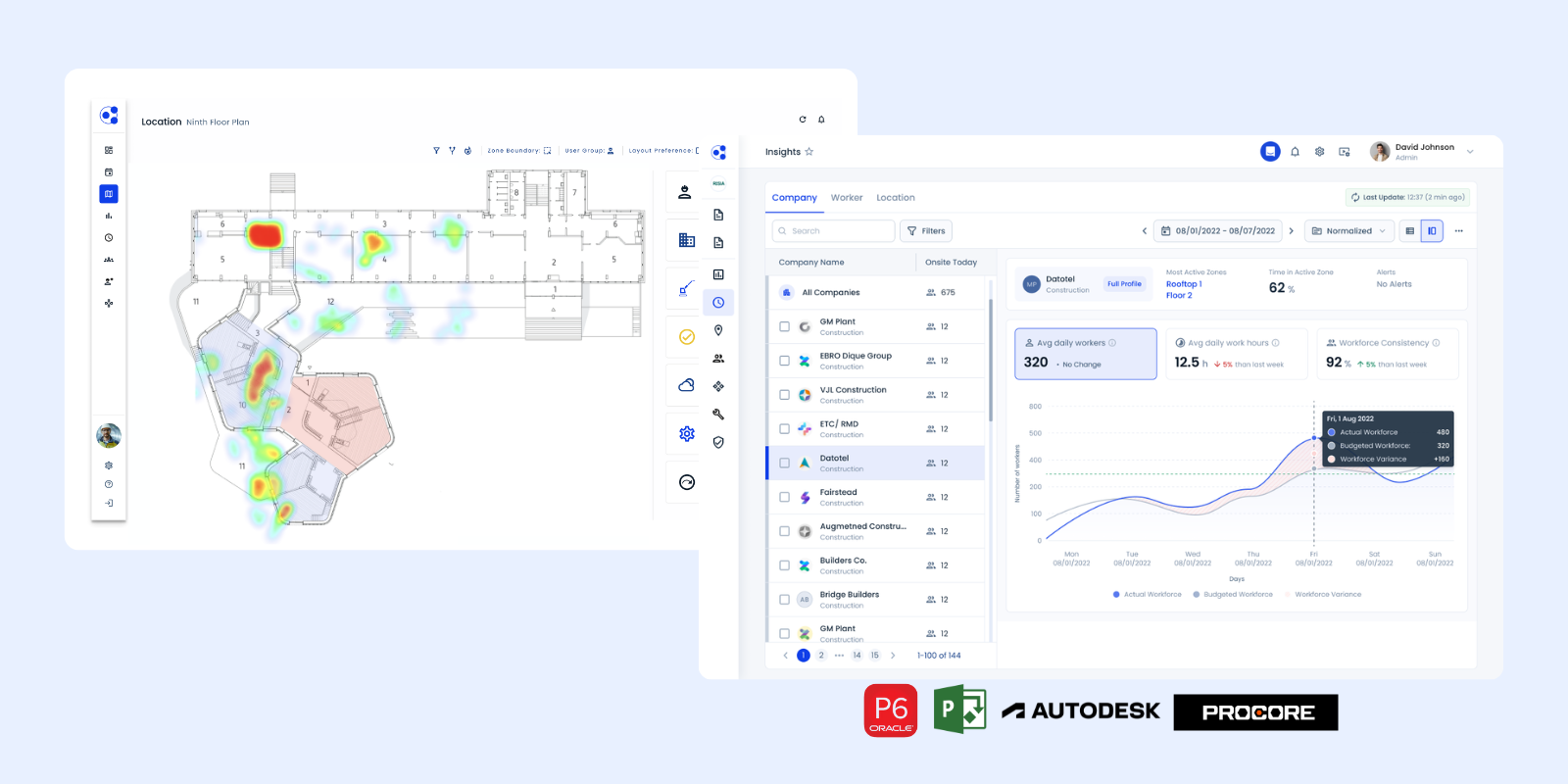
Best Practices for Implementing AI Scheduling
To maximize AI benefits:
- Integrate AI with existing project management tools – avoid siloed data.
- Leverage IoT devices and smart badges for accurate labor tracking.
- Use predictive analytics for workforce planning – prevent trade stacking or shortages.
- Adopt scenario-based scheduling – test “what-if” models to reduce risks.
- Train project teams on AI insights – ensure decisions are data-driven.
Conclusion: Why AI Scheduling is a Must for Modern Construction?
Construction delays are costly, complex, and inevitable under traditional management. AI-driven scheduling platforms like Kwant.ai allow owners and GCs to proactively manage workforce allocation, detect delays early, and optimize schedules dynamically.
For projects with tight deadlines, multiple trades, or high-value assets, AI scheduling is no longer optional it’s essential for risk mitigation, efficiency, and profitability.
Prevent delays and optimize your construction projects with AI-powered scheduling. Explore how Kwant can transform your construction scheduling. Book a demo.
.svg)

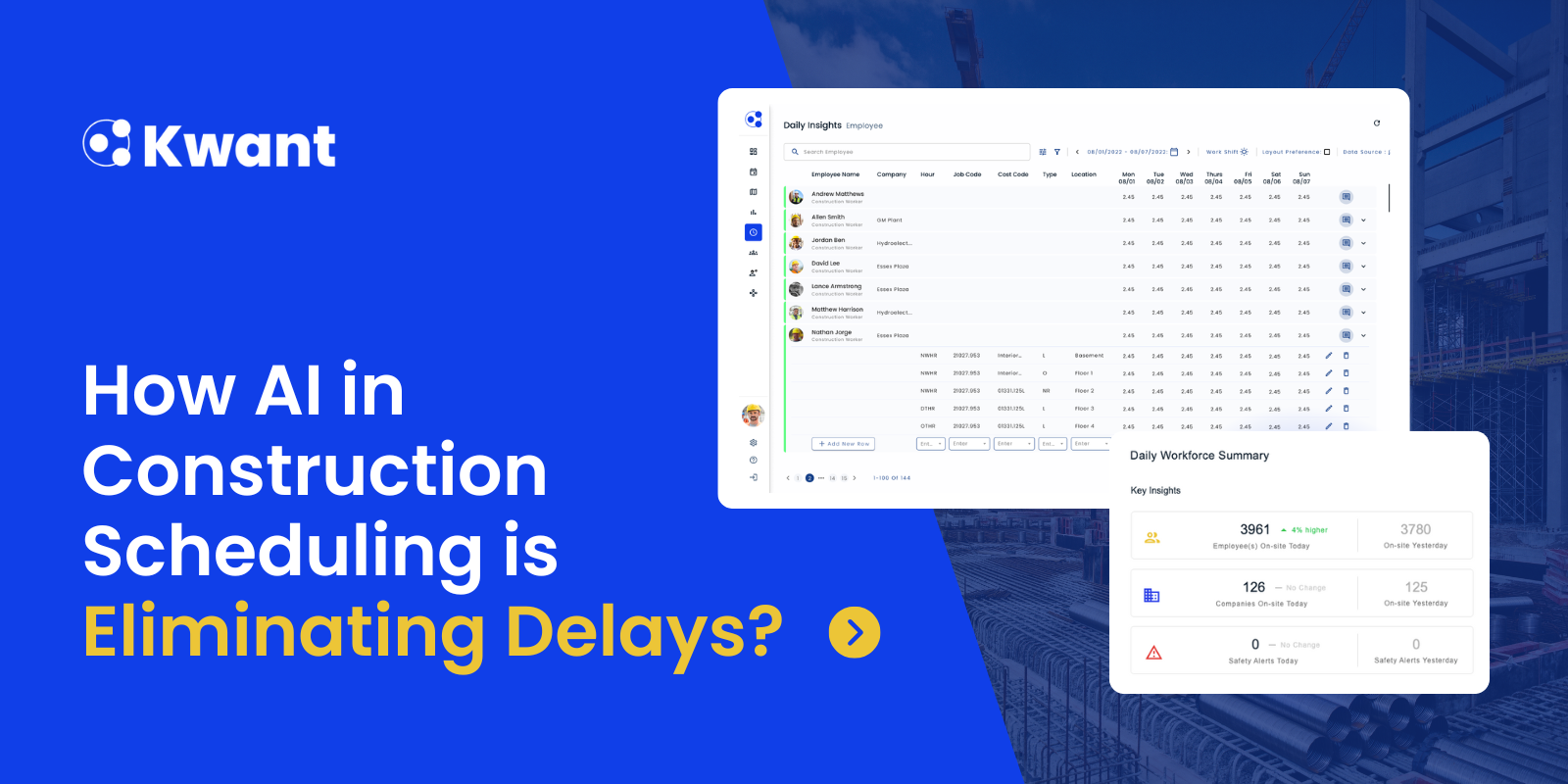





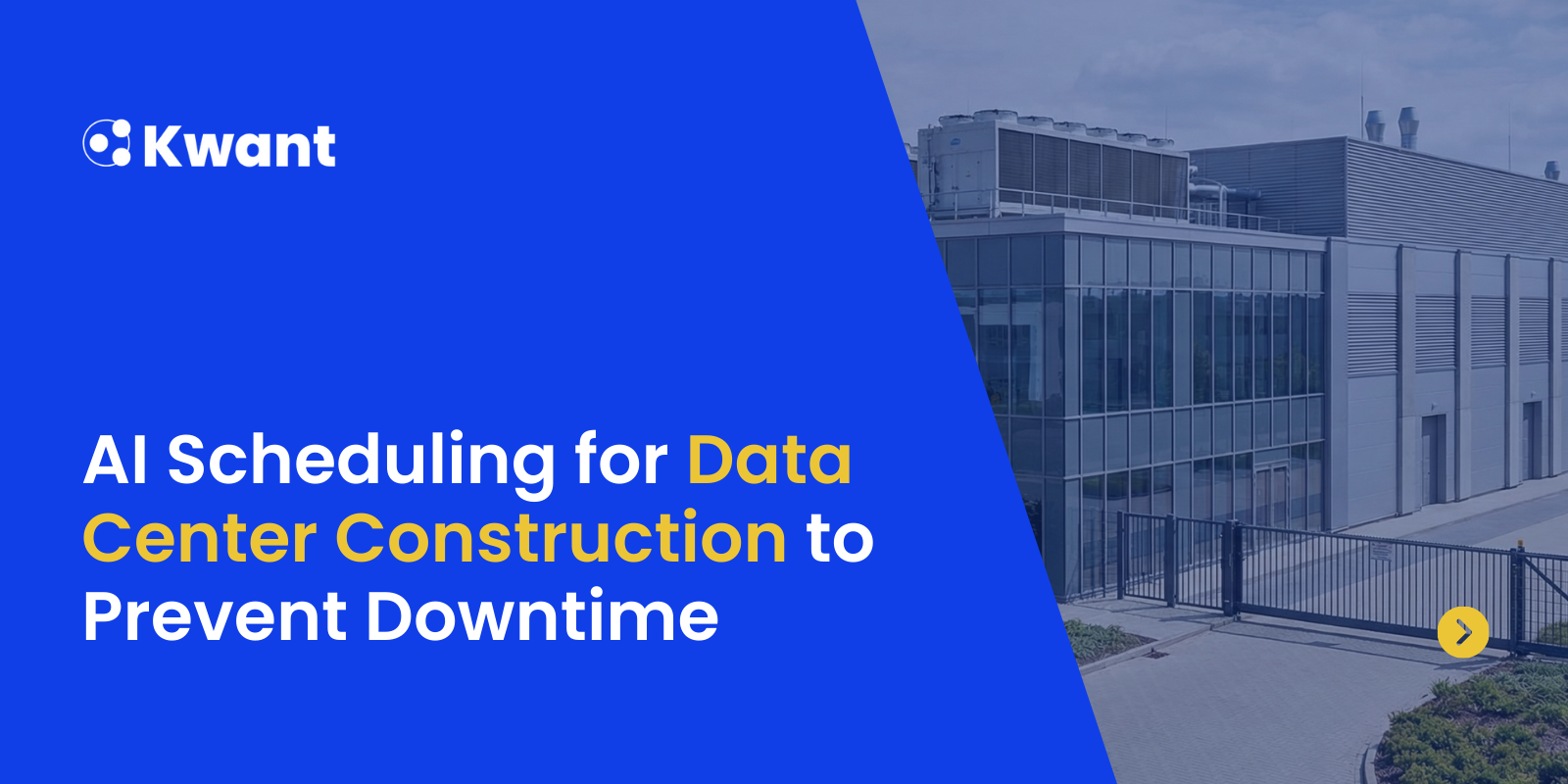

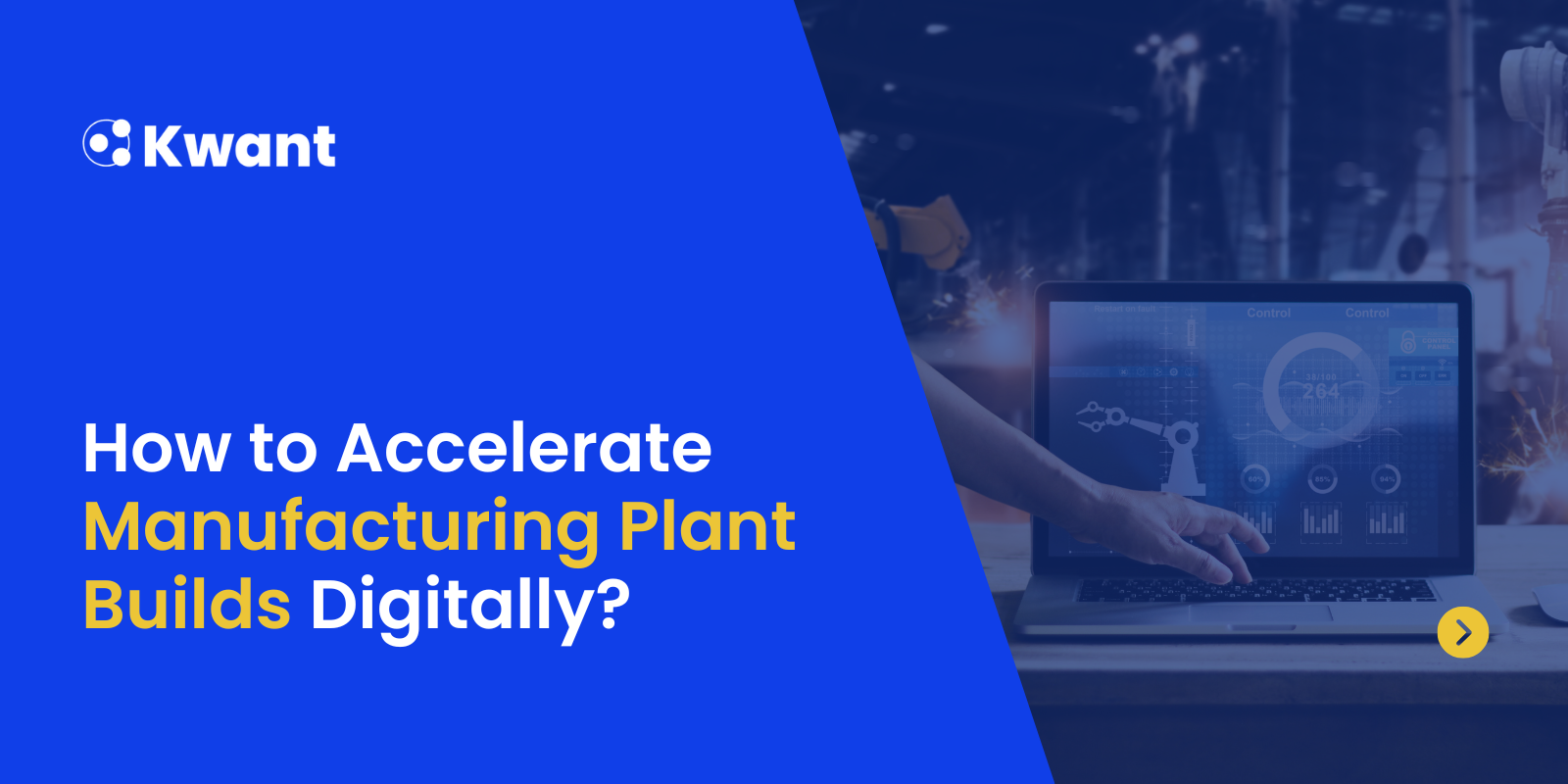

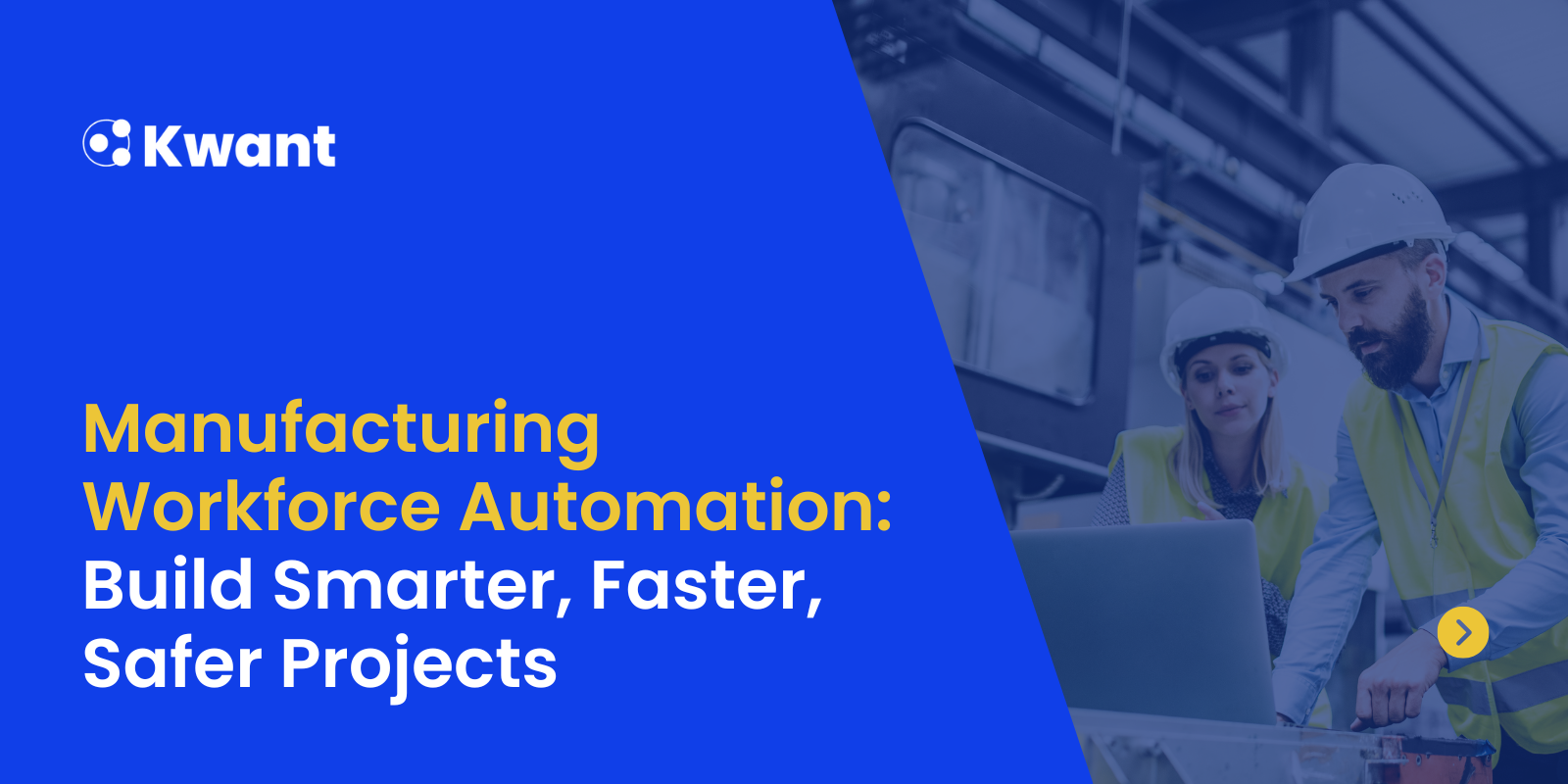
%20(1).svg)














